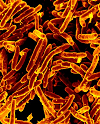
It all started when I thought I had gingivitis. I came to this conclusion after consulting the most reputable source I knew, webmd.com of course. Sitting at the doctor's office, I anxiously waited for the confirmation. Were my suspicions correct? Nope! As my doctor explained my negative result, guilt slowly overcame me. I had just wasted three hours of my dad's time. Driving home, I was determined to find meaning in this seemingly unfulfilling trip, and indeed I did. The visit highlighted my privilege, which ignited my "eureka" moment. A dental diagnosis requires time, a medical professional, and money. Three things millions of people globally don't have; a problem I sought to address. With the aim of increasing dental care worldwide, I invested the following two years in creating an automated dental cavity detection system using Artificial Intelligence (AI). With a single dental photographic color image, my system can provide a cavity diagnosis and explain the diagnosis to the end-user in an understandable manner. By automating detection and explainability, which are skills dentists typically employ, I hope to assist those who can't visit the dentist due to lack of dental insurance, dentophobia, or limited dentist availability. Through this research, I had the opportunity to work with an IBM researcher and experiment with different deep learning architectures, explainable AI algorithms, and training techniques such as curriculum learning and transfer learning. By incorporating deep learning into my project, I gained experience in an interdisciplinary field powered by linear algebra, calculus, statistics, and biology. Above all, conducting such research has motivated me to pursue a career in computational health. Read more...

Since 2014 I have watched forests and farms struggle against the spotted lanternfly. As I saw my community struggle I decided to take action. I organized "scraping parties," where I taught others the dangers of the spotted lanternfly and how to scrape their egg masses. Additionally, I created a YouTube video and many flyers that teach about the importance of eradicating the spotted lanternfly. I even planted over 600 grapevines at a local vineyard, to make up for the ones lost due to the spotted lanternfly... I changed the focus of my project to determine the feeding pattern of the spotted lanternfly, using phloem sap from the spotted lanternflies' host plants. I extracted the phloem sap from host plants and tested their monosaccharide concentration using High Performance Liquid Chromatography (HPLC). By doing so I discovered that spotted lanternflies prefer to feed on plants with a higher concentration of sucrose and a low concentration of fructose and glucose.While testing the monosaccharide concentration in host plants to discover the spotted lanternflies feeding pattern, I began to wonder were there other patterns that spotted lanternflies possess? ... In order to look for more patterns I tested the spotted lanternflies on a molecular level and compared my results to results in China, India, and Vietnam. I discovered that the spotted lanternflies in the United States had the same mitochondrial DNA (mtDNA) as spotted lanternflies in Asia. Read more...

Gastrointestinal illnesses afflict more than 100 million people in the U.S. alone and are often indicated by gut microbiota motility. Typically, swarming bacteria are indicators of infection while swimming bacteria are more innocuous. Current diagnostic methods for intestinal diseases are lengthy, expensive, non-specific, or lead to serious complications. This study proposes a novel way to diagnose Inflammatory Bowel Disease (IBD) through quantitatively distinguishing bacterial motion. Current methods of discerning bacterial motility involve only qualitative description without consideration of potential medical applications; no quantitative models to differentiate bacterial motility exist. In this study, a novel interdisciplinary diagnostic tool was developed that distinguishes swarming and swimming SM3 bacteria quantitatively for the first time. Photolithography was used to create PDMS sheets and microgears for studying both motilities. Software captured images for Particle Image Velocimetry (PIV) analysis for the calculation of Vortex, Nematic, and Polar Order Parameters, which were fed into a developed machine learning algorithm; accuracy was analyzed to ascertain the importance of each variable in motility distinction. Vortex Order Parameters (VOPs) were used to generate a Vicsek model for differentiating swimming and swarming which demonstrated the importance of cell-cell alignment force in motility distinction - the model yielded high and low VOP values for swarming and swimming respectively. Studies of motility on intestinal tissue supported modeling trends from prior PIV analysis on agar. This novel tool can be tested in a variety of intestinal diseases to provide a preliminary diagnosis, operating more economically, efficiently, specifically, and safely than conventional procedure. Read more...

During the winter of 2020, I was expecting to have a very different project for the summer. COVID was not something that was on everyone's minds all the time, and I was spending time looking and applying for internships in a lab performing biological research. Biology has always been of great interest to me, and I want to pursue biomedical engineering in the future. When the pandemic hit, my summer plans were upended. Labs everywhere were closed and not accepting any interns. Worried that I would not have a project for the following school year, I realized that I needed to shift gears. I was suddenly tasked with coming up with an idea for a project that I could perform almost completely independently on my computer at home. I also had to find a mentor to answer any questions I had. As I watched the media cover stories about anti-masker protests and COVID deniers, I started to think about the psychology of the crisis that we were in. Why did the United States, one of the countries best equipped to deal with a pandemic, have such a dismal response? I started to research the psychology behind crisis responses, especially the theory of reasoned action, and that led me to my politics-focused question. I thought that it was possible that people were looking to sources of information that they trust, and as a result were consuming partisan information with conflicting messages, resulting in the disastrous first few months of the pandemic. Read more...

Lung cancer is the leading cause of cancer-related deaths in the world and succeeding melanoma skin cancer, it is the second leading cancer in men and women. Accessibility to the expensive imaging technology and accurate diagnostic tools for this disease is limited and therefore leads to death at an early stage. The need exists to develop an innovative diagnostic and detection measure to promptly detect the presence and type of cancer. This sparked the interest to develop an innovative lung cancer detection algorithm, LCDetect. It uses Python scripts, machine learning models, segmentation algorithms, and localization of solitary pulmonary nodules (SPN's), tumors, and lesions to detect the presence of cancer, malignity, type and stage. It uses the lung CT scan to provide a thorough diagnosis and reduce the need for PET and biopsy to prevent late detection. The algorithm works in three modules; image preprocessing, image detection, and a convolutional neural network model (CNN). Preprocessing includes noise removal, normalization, image filters, segmentation and augmentation. Extracted regions of interest, that are based on the location of nodules, are passed to image detection for feature extraction through segmentation and pixel calculations. Based on the extracted features, the layers of the CNN categorize the lung cancer using location-based analysis. Through the complex image detection and preprocessing techniques that feed through the layers of CNN model, the generated feature maps perform this classification. After several optimization techniques such as backpropagation and regression, a thorough statistical analysis was performed. Then, the algorithm was deployed on Azure Web Services. The system was trained and tested across 50,000 datasets and patient CT scans from local radiologists. The final algorithm passed with an accuracy of 98%. LCDetect is an innovative and fully functional solution to accurately detect for adenocarcinoma, squamous cell, non-small cell, and small cell lung cancer and predict the stage. Read more...

A few years ago, my best friend returned from her vacation to the island of Cozumel off the coast of Mexico with a GoPro full of images she had taken while paragliding, hiking, and relaxing on the beach. Most interesting to me, however, were the photos she had taken while scuba diving in the coral reefs that surround the island. As we scrolled through dozens of pictures of corals, I realized that my friend, like millions of other tourists, had in her possession a treasure trove of information about the health of the coral reefs of Cozumel at the time she visited. However, the issue was how to collect and analyze all that information efficiently ... Machine learning (ML) is a field of computer science concerning the study of algorithms that learn from exposure to previous data in order to improve at autonomously completing a task. Chances are you've already interacted with ML algorithms in your everyday life: they drive the show recommendations that Netflix gives you, virtual assistants like Siri and Alexa, and facial recognition software. I developed my interest in this field as I was thinking about my future in college and beyond; in fact, this project was a principal factor behind my decision to study computer science in college. I decided to dive head first into exploring ML by applying it environmental monitoring. With the guidance of my mentor Mr. Anthony Pellicano, the ML specialist at Angion Biomedica Corp. in New York, I used a convolutional neural network to analyze underwater images of coral reefs in order to detect the presence of healthy and bleached corals within these images. Read more...

Sensitive crop regions are constantly under environmental stresses that foster plentiful plant disease. Basil plants, for instance, have been victims of Fusarium oxysporum (F.o.) wilt for decades, where growth conditions have stimulated progression of this disease, and subsequent crop destruction. A simple and effective treatment that would eradicate F.o wilt, while promoting overall plant growth, is needed. Metallic nanoparticles (NPs) have shown to improve plant health and overall crop yield, due to systemic movement through the plant's root system, where the nutritional value of metallic nanoparticles is fully realized. This research investigates whether the "foliar-spray" application of NPs of copper, manganese, and zinc (as oxides) increases the growth rate and crop efficiency of healthy O. basilicum plants, and inhibits the adverse effects of F.o., to ultimately devise an easily-applied, simple, and effective treatment to promote increased crop growth. Pre-grown (3") basil plants were first transferred to ~0.8L pots using ProMix-BX soil, which was pre-inoculated with 1-2ml of 1g/L-F.o in water. Each plant was then treated with ~2ml foliar spray of the respective nanoparticles. After 6 weeks growth, all three MO-NP treatments produced significant increases (>120%) in biomass, relative to diseased plants; ZnNPs were the most favorable, at 180% increase in biomass relative to untreated, diseased plants. Combined Cu-Zn NP treatment enhanced diseased plants' biomass by 29% and provided a 40% increase in height. Most importantly, diseased-plants outgrew healthy controls by 21%, highlighting the treatment's ability to fully suppress F.o., so that infected plants grow beyond normal, healthy conditions. Read more...

Heart disease or cardiovascular disease - are two words that a patient prays not to hear during diagnosis. According to the Centers for Disease Control and Prevention (CDC), cardiovascular disease (CVD) is the leading cause of death for men and women across most racial and ethnic groups in the U.S. CVD is the grim reaper of diseases, accounting for approximately 655,000 deaths annually, or 25% of all deaths in America (pre-COVID-19 pandemic). Besides the toll on human life, the financial impact is equally devastating. US annual cost of heart disease is $219 Billion including cost of health services, medicines, and lost productivity ... This case study reports the results of a research project to gather insights into heart disease lifestyle and risk factors using statistical analysis that is generally used to improve product and service quality in companies. This research aimed to answer the following: what does the statistical analysis of CDC data from all US states reveal? What known facts does it affirm? What new risk factors does it uncover? What does it reveal about combined effects of these risk factors? Read more...

As I gathered data to analyze, I ran into the striking problem of racial bias in all available samples and the disparity in early diagnosis and survival rates between the African American population and European individuals. As a woman of color and youth activist myself, I wanted to start a project that studied cancer epigenetics in the context of population-specific health disparities to begin revolutionizing early and equitable diagnosis methods and treatment options. As I pursued my research into the following summer, I began to see parallels between epigenetic variates and sex-specific higher incidence as well. My research focus shifted to epigenetic markers correlated with larger population-specific incidence (both racial and sexual), and how understanding these epigenetic markers could eventually aid in population-specific early diagnosis procedures ... I believe the most interesting and impactful next question to further the intersection of epigenetic oncology and population epigenetics is why and how do population-correlated cancer-causing epigenetic variations arise, and what can we do to prevent them? ... In 50 years, my hope is that researchers will have used this epigenetic data to develop comprehensive and accessible early diagnosis models for at-risk populations, isolated population-correlated oncogenic epigenetic markers, and started to develop epigenetic therapies for these markers (which, because epigenetic modifications are reversible unlike mutations, have already been shown to be highly effective in the clinical setting). Read more...

I've always had a keen interest in the field of veterinary medicine. Towards the beginning of my high school career, I discovered animal physical rehabilitation. I had realized there was this field completely devoted to the healing process for various animals' injuries and even used as a surgical alternative. As I explored this topic further, I wanted to do something about it, so I decided to sign up for the Science Research program during my Freshman year. Little did I know, this small interest of mine would flourish into a passion that I'd be pursuing as a career ... Dogs have been man's best friend for thousands of years. Unfortunately, their life is commonly cut short due to osteopathic diseases, ranging from mild to severe cases, sometimes even resulting in death. Previous research has found that in some small and large breed dogs, their age of neutering can cause significant hormonal shifts, increasing the number of osteopathic occurrences later in life. There has been a lack of research on these hormonal shifts and what has been truly causing this correlation. Through a blood sample data analysis study, looking at numerous records of early-neutered canines (n=75), I determined a significant direct linear relationship to increased diagnoses in hypothyroidism with early neutering (p < .0001). Additionally, I took the development of any osteopathic disorders post-CBC and compared this disease development time period between canines neutered < 6 months and ? 6 months. Various breeds of early-neutered/spayed canines had developed early signs of patella luxations, cranial cruciate ligament rupture, or limb lameness in a shorter time period in comparison to canines neutered/spayed ? 6 months (p = .009). Although an important mission in the veterinary world is to control overpopulation, it is crucial to realize that this pattern of early neutering has been contributing to these drastic hormonal and bone density shifts. This only maximizes the risk for diseases and health issues down the line for the dog. Read more...

Did you know that we've been studying the expanses of outer space longer than our own brains?! The term neuroscience was coined barely a century ago, proving how little we know about the 3 pound supercomputer within each and every one of us ... as I started reading background literature, I became hooked! I found it incredible the way the brain stores the people, places, and items we see everyday like shelved books in a library. Everything is so expertly categorized while also allowing the brain to make connections between related concepts (Ex: Cat and Dog). It's crazy to think that of the brain's immense processing power, close to half of it is dedicated singularly to processing vision! ... Overall, there were many fascinating things I learned from my research. First off, the brain prioritizes scenes over objects when it comes to visual recognition. The brain uses a heuristic approach to guess what objects may be present using the scene. For example, "If there's a beach maybe there will be a beach ball." Therefore, scenes were far more significant towards familiarity than objects. Another significant finding related to the visual cortex processing pipeline. Past studies assert that memory interfacing does not occur in the lower levels of the visual cortex. However, both this year's study and last year's studies show significant evidence that lower stages of the visual cortex actually participate in high-level processes. Some examples are short-term memory and mental imagery. Read more...

My research was motivated by my profound interest in how adolescents use social media, and TikTok in particular, which stemmed from my own personal experience with the platform and my previous scientific research in this area. I had already begun to conduct research on TikTok during my junior year, so I knew that there was very little scientific literature about this youth-dominated platform. My junior year research project was focused on the socioemotional well-being of adolescent TikTok users, and was conducted to satisfy my personal concern about how my usage might be impacting my own moods. After I completed the research in 2019, the app was even more popular, so there was more to learn about how it was being used and what impact it was having. In early 2020, I began to search for mentors that could guide me. When my school went remote due to the pandemic, my research mentor and I were already exploring potential dimensions for a study and concluded independently that we had to capture this moment while it was happening. I began data collection almost immediately, without a clear research question, because we had no idea about the scope or duration of the pandemic. I was eager to collect as much data as possible about how people were posting about Coronavirus on TikTok to see where the data would lead me and what insights it could offer. The results of the final research contribute to our burgeoning knowledge of trending content by offering a snapshot of the social media landscape during a crisis, showcasing the connection social media provides, and exposing its commercial facets. Read more...

The main problem of our project was investigating whether or not there was an efficient 2D analog to the segment tree. Here, instead of updating and querying arbitrary ranges of a list of numbers, we want to update and query arbitrary submatrices of a matrix of numbers. When updating a submatrix, we add all numbers in the submatrix with an arbitrarily chosen constant value; when querying a submatrix, we find the minimum of all numbers in the submatrix. We wanted to see whether there was a data structure that could efficiently perform each of these operations being repeatedly done one after the other, where each update can affect future queries. The answer we found to this question is a conditional no if a specific long-standing conjecture is assumed. The conjecture is the "All-Pairs Shortest Path Conjecture", which states that the "All-Pairs Shortest Path" problem cannot be solved in "truly subcubic" time. Since at least the 1970s, it has been known that the "All-Pairs Shortest Path" problem has equal difficulty to computing a certain operation on matrices, called "min-plus matrix multiplication", which is similar to the standard matrix multiplication in linear algebra but where the summation is replaced with the minimum() function and the multiplication is replaced with addition. Also since the 1970s, this conjecture has remained open, and not too much progress has been made towards refuting it. The key to achieving our research result was realizing that if there was an efficient 2D segment tree, then it could perform min-plus matrix multiplication in truly subcubic time, which would refute the conjecture. Therefore, if the conjecture is true, which many believe to be the case, then an efficient 2D segment tree is impossible. Read more...

University of Chicago
Professor David Mazziotti
Editor